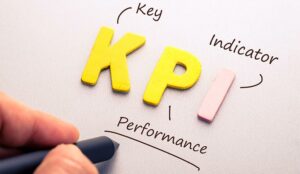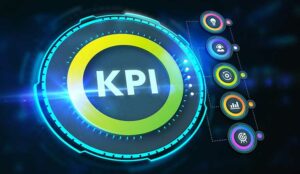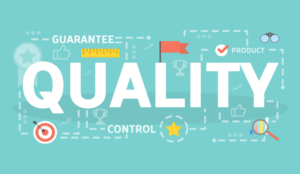KPIs (key performance indicators) are an important part of a quality assurance program. These metrics not only analyse and measure agent performance and output, they also help call centre managers determine what is working well in their call centre processes, and where improvement is needed.
But there are many KPIs out there and determining which to prioritize in your Quality Assurance plan can be overwhelming. To help narrow your search, we’ve put together 11 essential contact centre KPIs that measure customer satisfaction.
What Do We Mean by Contact Centre KPIs?
Contact centre KPIs are tools that measure the success of a call centre operation. They demonstrate if the call centre is headed in a good direction in terms of growth and goals and if agents are solving customer issues.
Why Are Customer Service KPIs So Important for Call Centres?
It is more important than ever to prioritize customer service KPIs, especially in today’s digital climate. Because customers can be fickle. One in three customers will abandon a beloved brand after a single bad experience.
While 86% of customers are willing to pay more for a service or product in exchange for a better experience.
Not only can KPIs help you hit customer service performance standards that will keep customers happy, but they can also help you understand how your call centre is performing versus your customers’ expectations.
Remember, customer service metrics matter to the bottom line for businesses.
If you can’t measure it, you can’t improve it. That’s why it is so important to understand what contact centre KPIs are, and how to pick the right ones for your call centre.
How to Pick the Right Contact Centre KPIs
Choosing the right KPIs for your call centre can be overwhelming. But staying focused and set on the goals you want to track can help you stay organized. Keep the following tips in mind when selecting your KPIs:
- Less is more. Due to the number of KPIs available, a “less is more” approach is key when it comes to choosing the call centre KPIs to analyse. Focus on analysing fewer KPIs, rather than aiming to manage dozens of reports. This limits mistakes and distractions.
- Understand the value of real-time versus historical data. Measuring past performance is important to improving call centre performance. But take the time to understand why you are measuring certain processes in your call centre. Prioritizing real-time data can help you catch issues as they are happening, helping your team be more proactive.
- Stay on course. There is no shortage of information on KPIs and QA. But try your best to stay on course. Find a balance between useful information and getting overloaded by information.
- Be realistic. It is easy to get swept away by possibility. The amount of data that can be measured through QA is vast. It may be tempting to measure every process and interaction possible while setting lofty goals that your call centre may not be prepared for. Make sure your KPIs are both measurable and attainable for your specific centre.
11 Customer Support KPIs to Monitor
There is a range of KPIs that can help your call centre achieve QA success. But some stand out more than others. We have chosen eleven KPIs that specifically measure customer satisfaction, agent performance, and call centre performance.
- Customer Satisfaction Score (CSAT). This KPI measures how satisfied customers are with their experience on a 1-10 scale.
- Average Speed of Answering (ASA). Also known as Average Delay of Calls, this customer service KPI measures how quickly call centre agents answered the phone.
- First Call Resolution (FCR). This metric analyses whether call centre agents were able to resolve a customer issue during one call, or if multiple calls were necessary.
- Average Handling Time (AHT). This KPI can be a bit tricky. It measures how long it takes to resolve a customer call, but too low a score can negatively impact call centres. This is because the goal should be to resolve the issue and not to shorten the length of the call.
- Average Idle Time (AIT). AIT measures how many seconds an agent takes to resolve an issue after wrapping up a customer call. This includes inputting information and necessary details after taking a customer call. This process can be expedited through QA software tools.
- Average After Call Work Time. This valuable KPI is another term for Average Idle Time and measures the same steps an agent takes to input information after a call. This KPI is helpful when analysing the efficiency of call centre processes.
- Average Abandonment Rate (AAR). This metric tracks if a customer call is ended prematurely, or if the customer hangs up during an interaction.
- Customer Effort Score (CES). This metric is extremely valuable because it provides key insight into the customer experience. CES analyses how easy the call centre was to work with from the customer’s perspective, and measures wait and transfer times and if they had to repeat themselves numerous times.
- Net Promoter Score (NPS). Understanding your Net Promoter Score should be a top priority in your QA strategy. This KPI metric tests the fundamental goal of a QA program: how likely is it that your customers will recommend you to their friends? By measuring this metric, you can understand where your QA processes are working, and where improvements are needed.
- Revenue Per Successful Call. Also known as “Net Income Per Successful Call,” this KPI measures revenue gained from a customer call. This customer service metric helps understand how much money your call centre is making per call.
- Agent Turnover Rate. Call centre agent turnover is quite high. Average industry turnover rates are between 30 and 45%, which can be devastating for call centre quality assurance processes. Understanding the turnover rate in your call centre can help identify training, hiring, and onboarding issues, which can then lead to improvements.
Understanding these customer service KPIs can greatly improve call centre processes and customer satisfaction scores. By prioritizing these important KPIs, improving the customer experience will become second nature to your call centre now and in the future.
This blog post has been re-published by kind permission of Scorebuddy – View the Original Article
For more information about Scorebuddy - visit the Scorebuddy Website
Call Centre Helper is not responsible for the content of these guest blog posts. The opinions expressed in this article are those of the author, and do not necessarily reflect those of Call Centre Helper.
Author: Scorebuddy
Published On: 19th Apr 2022 - Last modified: 27th Apr 2022
Read more about - Guest Blogs, Scorebuddy






 Scorebuddy is quality assurance solution for scoring customer service calls, emails and web chat. It is a dedicated, stand-alone staff scoring system based in the cloud, requiring no integration.
Scorebuddy is quality assurance solution for scoring customer service calls, emails and web chat. It is a dedicated, stand-alone staff scoring system based in the cloud, requiring no integration. 






























